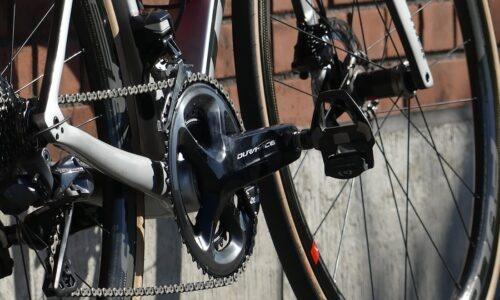Table of Contents:
What exactly is a bottom bracket?
The bottom bracket is, in the simplest terms, a set of bearings (and other supplementary parts) housed in a hollow opening in the bottom of a bicycle’s frame, known as the bottom bracket shell.
This is where the crankset is fitted, and the crank axle (aka spindle) rotates on those bearings allowing for smooth rotation of the pedals.
A good bottom bracket = a happy drivetrain = a fast bike!
The bottom bracket is one of the most important components of any bike, even though it is not always the most readily visible one. One of the main factors affecting the efficiency of a drive train is friction.
Friction losses can significantly decrease the efficiency of a bicycle’s drivetrain.
Bike designers and drivetrain component manufacturers put much effort into ensuring that friction losses are minimized, but wear and tear takes its toll and a dirty, ill-maintained and worn out drivetrain will have significantly more power losses to friction (i.e. the bike will require slightly more power to pedal at a given speed compared to a new or well-maintained drivetrain).
Bottom bracket bearings, being some of the largest bearings on the bike, can introduce unnecessary friction if the bearings are of low quality, worn out or have had their useful life shortened due to lack of maintenance.
How complicated can a pair of bearings be?
 Despite its relative simplicity as a component, not all bottom brackets are created equal. Bearings, the main elements of a bottom bracket, come a range of types, specifications and manufacturing tolerances.
Despite its relative simplicity as a component, not all bottom brackets are created equal. Bearings, the main elements of a bottom bracket, come a range of types, specifications and manufacturing tolerances.
When the time comes to replace the bottom bracket on your bike, it might be worthwhile to look into the variety of options being offered on the market, especially aftermarket options that may often offer innovative upgrades than most cheaper bearings that are often chosen at production to minimize manufacturing costs.
Bottom bracket standards
In a perfect world, replacing your bottom bracket should be fairly straightforward. Alas, the reality of replacing or upgrading most modern bike’ bottom bracket is far from a simple endeavor.
With the significant technological developments that the cycling industry has witnessed over the last decade, bike manufacturers have offered their own versions of bottom brackets, with claimed advantages associated with each offering.
Such a vast menu of competing standards has, unfortunately, introduced a significant measure of puzzlement.
The process of identifying the correct bottom bracket on your bike and sourcing a direct fit replacement can be very a frustrating and confusing pursuit, especially if you’re not up to speed on what all the acronyms, numbers and otherwise stupefying designations on different bottom racket standards mean.
Demystifying your bike’s bottom bracket information
To identify the bottom bracket standard your bike frame uses, the best source of information is usually the manufacturers website. Your bike’s model page usually lists this information under specifications.
There are two main ways of affixing bottom brackets to a frame:
1. Threaded bottom bracket shell: in which threads are cut into the shell itself (in the case of steel or alloy frames) or threaded inserts are used (in the case of carbon fiber frames), and bearing cups are then threaded into the shell.
Threaded shells or inserts on most modern bikes generally come in BSA English threading. Italian threading is sometimes found on older bikes.
2. Press-fit: where the bearings (or non-threaded bearing cups) press directly into the frame’s bottom bracket shell. Widely adopted press-fit standards include PF30, BB30, 386EVO and BBright.
Best road bike bottom brackets in 2022: the cream of the crop
This is not meant to be a comprehensive list of all the good bottom brackets on the market, but rather a selection of some of the best current offerings, categorized by bottom bracket standards common on modern road bikes.
Pending confirming compatibility with your frame, you really can’t go wrong picking out one of the bottom brackets in the list below:
Threaded bottom brackets
1. Shimano Dura-Ace BB-R9100 Bottom Bracket
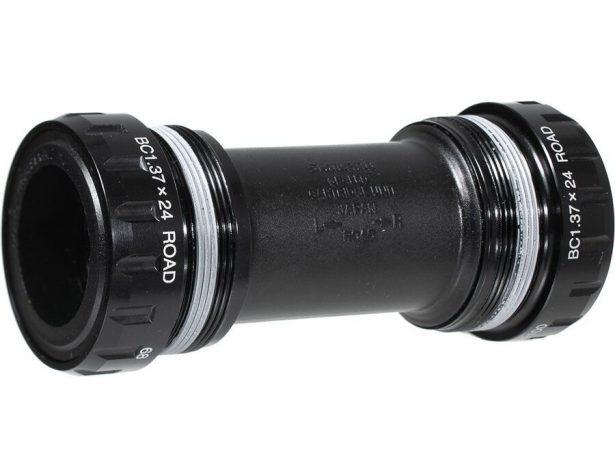
Dura-Ace is the top tier of road drivetrain components the famous Japanese manufacturer makes, and every Dura-Ace component is manufactured to exacting quality standards guaranteed by a three-year warranty. The Dura-Ace bottom bracket offers low weight, super smooth bearings and superior sealing against the elements.
The BB-R9100 has smaller threaded cups than its previous generation predecessor, requiring a new Shimano Hollowtech II tool. Conveniently, Shimano includes a small plastic adapter that allows you to use the old style Hollowtech II tool to install the new bottom bracket.
2. Chris King ThreadFit 24 bottom bracket
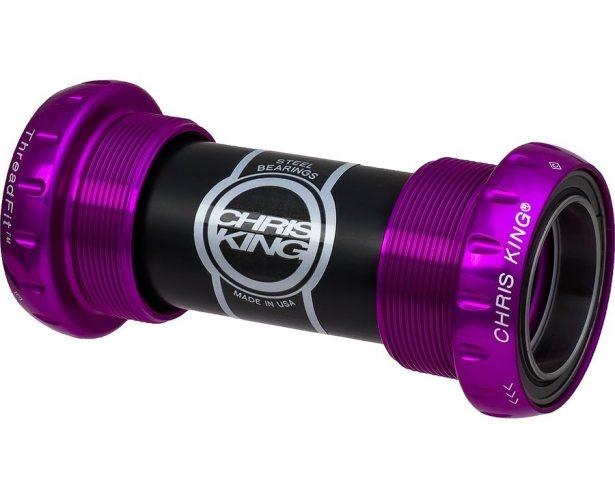
Chris King is an American manufacturer whose bike components are renowned for excellent longevity as well as beautiful anodized finishes. Chris King offers their bottom brackets in with either stainless steel or (more expensive) ceramic bearings, both of which they manufacture in-house, and are thus able to maintain tight manufacturing tolerances and ensure a long service life.
PF30 bottom brackets
1. Wheels Manufacturing PF30 Angular Contact Bearing PF30 bottom bracket

Wheels Manufacturing is an American company with an impressively large product catalogue, including a wide range of bottom brackets catering for nearly every existing standard in the bike industry.
Their PF30 Angular Contact Bearing PF30 bottom bracket has precision machined aluminum cups, unlike the plastic found on stock bottom brackets, which is prolongs bearing life.
Additionally, the angular contact bearings used in this bottom bracket are able to withstand a larger lateral preload than standard cartridge bearings, which makes for a quiet and more reliable bottom bracket.
2. Cane Creek Hellbender PF30 bottom bracket
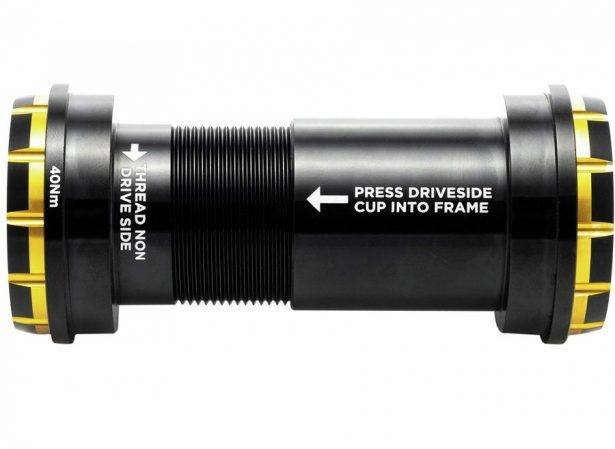
Another premium PF30 bottom bracket is offered by American company Cane Creek. The company claims the Hellbender to be far less vulnerable to dirt and moisture ingress, thanks to the special SKF bearings it utilizes which use an “oil-filled solid polymer matrix”.
There is little reason to disbelieve Cane Creek’s claims of the superior durability of the Hellbender, as the company is no stranger to making some of the best components on the market.
BB30 bottom brackets
1. FSA BB30 bottom bracket
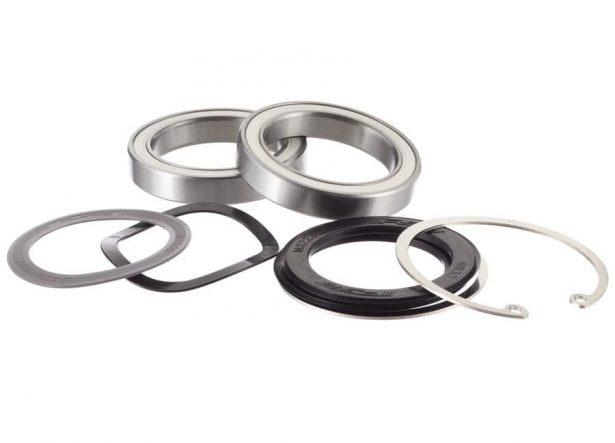
FSA’s BB30 PressFit bottom bracket doesn’t look fancy. Just a pair of bearings and associated spacers and bearing covers.
I include it on this list based on personal experience with it on one of my own road bikes, on which I’ve ridden over 4500 miles and the FSA bottom bracket is still going strong (I did pop the bearing seals on a regular basis to add fresh waterproof grease, which likely contributed to its longevity).
This is a reliable and inexpensive bottom bracket option if your frame uses the BB30 standard.
2. Rotor BB30-24 converter bottom brackets

Because the bearings are pressed directly in the bottom bracket shell, BB30 bottom brackets seem to be generally more prove to creaking than other types of bottom brackets.
Rotor offers a solution for people who have bikes that use the BB30 standard, but want to use 24mm spindle diameter cranks and get tighter fitting tolerances than usually offered by most conventional BB30 bottom brackets.
Rotor’s BB30-24 converter bottom bracket uses Enduro ceramic hybrid cartridge bearings and non-contact labyrinth seals for enhanced protection against potential contamination ingress.
BB386 EVO bottom brackets
The BB386 EVO standard is based on the BB30 standard, with a few added advantages, one being that (depending on your frame compatibility) BB386 EVO bottom brackets come in both press-fit and threaded versions.
KOGEL bearings BB386 EVO bottom bracket
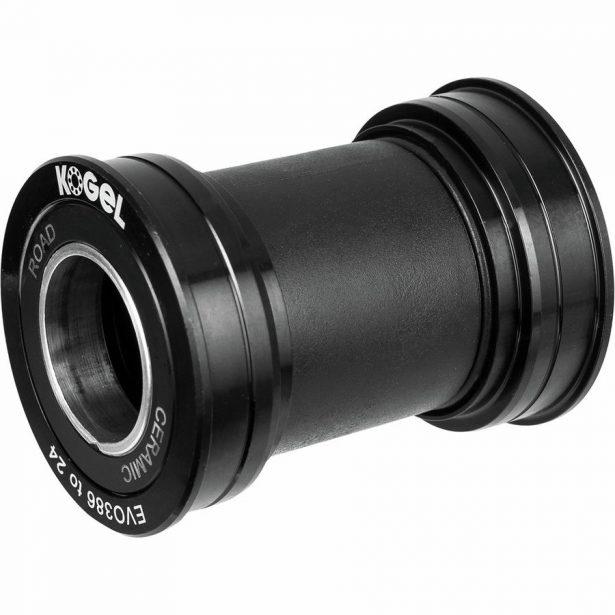
KOGEL bearings is an American company specializing in making high-end bearings (and components that use those bearings). Their range of bottom bracket products offers versions compatible with all standards on the market.
Their bearings exclusively use ceramic balls, not steel, which they claim to offer superior durability especially in adverse riding conditions (unlike steel, ceramic does not oxidize or rust).
BBright bottom brackets
The BBright standard is used by some road bike manufacturers, most notably Cervélo and Factor bikes.
Ceramic Speed SRAM DUB road bottom bracket
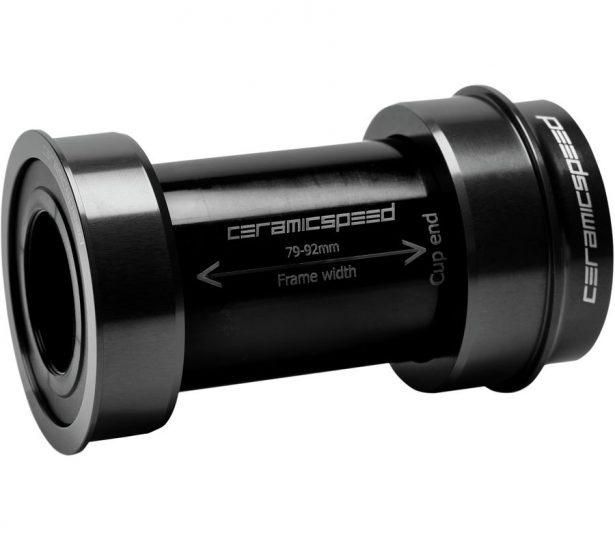
Ceramic Speed is a company whose focus is to minimize friction in all rotating elements on the bike. Their components do not come cheap, and this bottom bracket is no exception being the priciest product on this list.
If you are building up a dream road machine with a money is no object approach, Ceramic Speed’s bottom brackets should probably be at the top of your options list for the bottom bracket.
Your cranks will spin with greater smoothness and, if Ceramic Speed’s claims are accurate, you will save some significant watts (source: https://www.ceramicspeed.com/en/cycling/inside/technology/how-to-save-watts/).
Final notes on required tools and bottom bracket installation
To ensure trouble-free operation of your new bottom bracket, you need to ensure that they are fitted to your bike correctly and according to manufacturer specifications.
Threaded bottom brackets will require a wrench type tool which has a driver with splines matching those on the bottom bracket cups.
Press-fit bottom brackets will require a bearing press tool and the right size bearing drifts to press the bearings (or baring cups) squarely into the bottom bracket shell.
You will also need some grease and/or bearing retaining compound, depending on the type of frame and bottom bracket.
Different types of bottom brackets require different and often proprietary tools, all of which will not always be among a home mechanic’s toolkit. That’s where the expertise of your local bike shop will be invaluable.

Hani Morsi is a seasoned multi-discipline cyclist with a particular liking for mountain and gravel bikes. Hani is also a mountain bike coach, trail builder and experienced bike mechanic.

